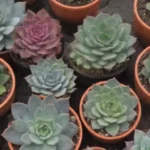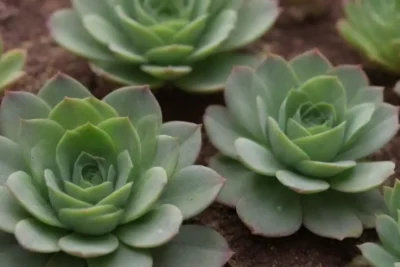
How to Adjust Succulent Care for Urban Environments and Settings

Introduction
Urban environments present unique challenges and opportunities for succulent enthusiasts. The concrete jungles filled with high-rise buildings and limited green spaces can create conditions quite different from the natural habitats where these plants typically thrive. As cities continue to expand, it is essential to adjust care techniques for succulents to ensure they flourish despite the environmental challenges. This article will explore a variety of practical strategies for adapting succulent care to the demands of urban settings, allowing you to successfully incorporate these resilient plants into your life.
In this article, we will delve into the specific care adjustments you can make for succulents in urban environments. We will cover various factors such as light availability, air quality, watering practices, and container choices, and provide helpful tips and guidelines for nurturing your succulents despite the challenges posed by city life. Whether you’re a seasoned succulent caretaker or a novice beginning your succulent journey, understanding how to adapt to urban conditions is key to cultivating a thriving collection in your home or outdoor space.
Understanding Urban Conditions for Succulents
Urban environments are immensely diverse in terms of weather and climate conditions, and these factors profoundly impact how you care for succulents. Temperature variations, for instance, can be quite pronounced in cities, where heat released from buildings and asphalt surfaces can create microclimates. These areas may experience higher ambient temperatures than surrounding rural settings, contributing to dehydration and stress for succulent plants. Understanding these conditions is the first step in successfully caring for your succulents.
Furthermore, urban areas often have limited sunlight due to the presence of skyscrapers blocking natural light. Most succulents require ample sunlight, ideally ranging from six to eight hours per day, and without proper adjustments, they may exhibit signs of stress, such as stretching, discoloration, or deformed growth. Therefore, it's essential to assess the available light in your urban setting and, if necessary, move your plants or choose varieties that tolerate lower light levels.
Moreover, the air quality in urban areas can be subpar compared to rural regions. Pollution and smog can affect plant health, including succulents, as they absorb nutrients and moisture from the air. While succulents are known for their resilience, they are not immune to environmental stressors. Being aware of these factors will help you create a care plan that fosters healthy growth and development.
Selecting the Right Succulent Varieties
Not all succulents are created equal, particularly when it comes to thriving in urban settings. The selection of succulent varieties plays a significant role in achieving success. When choosing succulents for urban environments, it is essential to research species known for their adaptability and resilience. For example, Haworthia and Zamioculcas zamiifolia, commonly known as the ZZ plant, are excellent choices due to their ability to tolerate lower light conditions and less-than-ideal air quality.
Consider also varieties that can withstand periodic exposure to temperature fluctuations typical in urban regions. Sedum, Echeveria, and Aloe species are often hardy and can handle variations in heat and humidity. It's beneficial to curate a collection that includes a mix of different types of succulents, as this can enhance their overall health and aesthetic appeal. Additionally, incorporating drought-resistant succulents is prudent, as they can thrive even with irregular watering, which is a likely scenario in urban environments where time and weather can be unpredictable.
 Ensuring Successful Watering Techniques for Echeveria Succulents
Ensuring Successful Watering Techniques for Echeveria SucculentsWhen selecting your plants, take into account the specific environmental conditions of your home or outdoor space. Observe sunlight exposure, proximity to heat sources such as radiators or air conditioning units, and the potential for cold drafts. Make your selections accordingly, keeping in mind that each species has different light and moisture requirements.
Adapting Light Conditions for Urban Succulents

One of the primary challenges of urban succulent care is ensuring that your plants get sufficient light. With tall buildings often obstructing sunlight, you may need to implement various strategies to provide your succulents with the illumination they require. Positioning your plants near windows that receive direct sunlight for several hours a day is key, but if your space lacks proper exposure, artificial lighting can serve as a beneficial replacement.
Grow lights, specifically designed for plant growth, can play an invaluable role in urban succulent care. Utilize LED grow lights that emit the full spectrum of light needed for photosynthesis. Depending on your succulents' need for light, you may need to run these lights for twelve to sixteen hours a day. Be sure to monitor your plants closely, as they may display signs of light stress, such as scorched leaves, indicating that your grow lights are positioned too close or the intensity is too high.
In addition to grow lights, consider using small reflectors or light-colored surfaces around your plants to enhance the available sunlight. Walls or surfaces that reflect light can help in distributing sunlight more evenly across your collection. If you have outdoor space, creating a vertical garden on balconies or walls can maximize light exposure while conserving space.
Watering Practices for Urban Environments
One of the most common areas of misunderstanding in succulent care is watering. Urban environments can lead to unique watering challenges, especially in hot, bustling cities where heat can evaporate moisture more rapidly. Therefore, it’s essential to adjust your watering practices to accommodate these conditions effectively. Properly assessing the soil moisture and knowing when to water is crucial for preventing overwatering or underwatering, both of which can lead to problems like root rot or dehydration.
When watering urban succulents, consider the type of soil you are using. A well-draining soil mix, ideally containing components like perlite, sand, or cactus mix, can help prevent excess moisture from accumulating. Check the moisture levels by sticking your finger into the soil or using a soil moisture meter. Typically, you should allow the top inch or two of the soil to dry out completely between watering sessions.
 How Time of Year Affects Succulent Maintenance Protocols
How Time of Year Affects Succulent Maintenance ProtocolsMoreover, the best time to water your succulents is in the early morning or late afternoon when the temperatures are cooler. This practice minimizes evaporation and allows thorough absorption of moisture before the heat of the day kicks in. Be mindful of the climate during different seasons, as your succulent may require more frequent watering during the warm months compared to winter when they enter their dormant phase.
Choosing the Right Containers for Urban Succulents
The selection of container can often be overlooked but is crucial for urban succulent care. The right planter can mitigate some challenges posed by urban environments, whether that be heat retention, poor drainage, or aesthetic considerations. First, ensure that your containers have adequate drainage holes at the bottom. Water accumulation can lead to root rot, which is detrimental to succulent health. Opt for ceramics or terracotta pots, known for their breathability and excellent drainage properties.
When choosing the size of your container, be mindful of the growth potential of the succulent you are planting. Smaller pots may work for juvenile plants, but as they grow, they may require repotting into larger containers. Avoid using plastic pots that retain heat and moisture, creating an environment where succulents may struggle. Instead, eco-friendly options made from recyclable materials can be a valuable choice in urban settings.
Additionally, consider the aesthetic aspect of your containers as urban gardening should not only be functional but visually appealing as well. Decorative pots that blend with your urban décor can enhance your living space's ambiance. Hanging planters, wall-mounted planters, or grouped arrangements on balcony railings can also elevate your succulents' presence, creating pockets of greenery that contrast beautifully against the surrounding concrete.
Addressing Pests and Environmental Stress
Urban areas can introduce unique pest challenges for succulents. Common pests include mealybugs, aphids, and spider mites, which thrive in the close proximity of city flora. Regular inspection of your plants is essential to catch any emerging pest issues early. An effective treatment plan may involve using insecticidal soaps or neem oil to deter these problematic pests gently. Always ensure that any treatment used is suited for succulents and does not harm the plants.
Environmental stressors from urban environments can also affect succulents. Pollution and poor air quality may lead to weak and stressed plants. To help mitigate these effects, consider setting your succulents in areas with better air circulation. If the possible conditions of stress cannot be avoided, giving the plants some TLC through increased humidity, such as misting or providing natural moisture with a pebble tray, can also be beneficial.
Be attentive to signs of distress. If your succulents show stunted growth, yellowing, or wilting, it is time to reassess your care methods, ensuring they are adapted to urban conditions effectively. Consistent monitoring and care adjustments will allow you to create a more hospitable environment for your plants, irrespective of the challenges posed by your urban surroundings.
 How to Create a Balanced Maintenance Schedule for Your Succulents
How to Create a Balanced Maintenance Schedule for Your SucculentsConclusion
Caring for succulents in urban environments requires a keen understanding of unique conditions and challenges present in city settings. From selecting the most suitable succulent varieties to adapting light and watering practices, each aspect demands thoughtful consideration and care. By taking proactive steps to accommodate the urban landscape, you can enjoy the beauty and resilience of these remarkable plants even amidst buildings and bustling streets.
The ability to successfully nurture succulents in urban environments not only beautifies your living space but also contributes to mental wellness. The act of engaging with nature, no matter how small, fosters a connection to the environment that is often lost in the city’s rush. By creating green spaces, even in small apartments or balcony gardens, you are playing an important role in green urbanization.
Ultimately, the goal is to create a nurturing environment where succulents can thrive, contributing both to your personal sense of well-being and to the broader environmental health of urban areas. With the right preparation, knowledge, and care, every urban gardener can create their own thriving succulent oasis, becoming a part of the growing movement to green our cities, one plant at a time.
If you want to read more articles similar to How to Adjust Succulent Care for Urban Environments and Settings, you can visit the Maintenance Routine category.


You Must Read